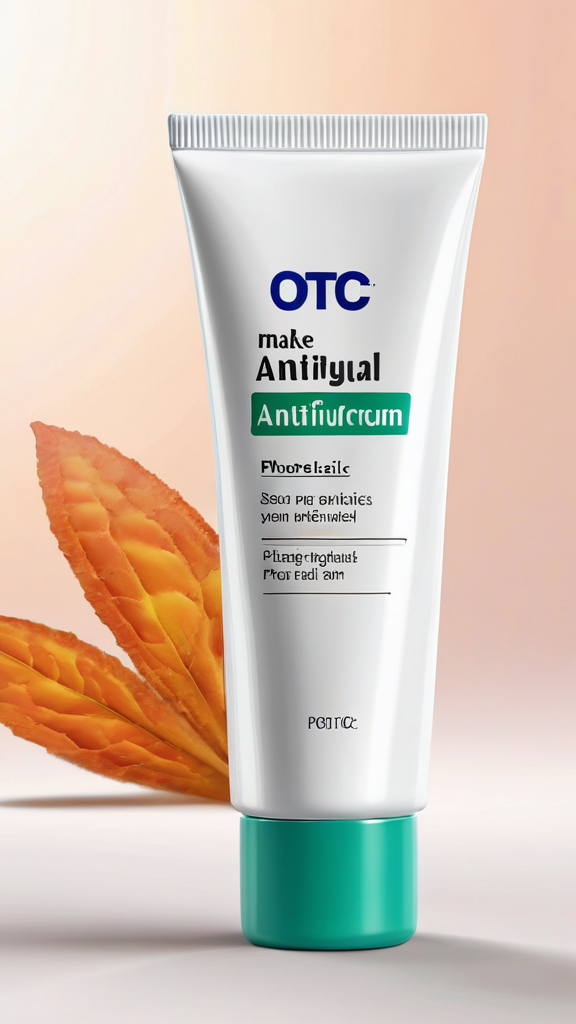The Best Fluffy Pancakes recipe you will fall in love with. Full of tips and tricks to help you make the best pancakes.

Otc Antifungal Cream
The Effectiveness of OTC Antifungal Creams: Choosing the Right Product for Your Needs
Over-the-counter (OTC) antifungal creams are often the first line of defense for treating various fungal infections, such as athlete’s foot, ringworm, and yeast infections. Understanding their effectiveness and how to select the right product can empower you to address these common skin issues with confidence.
Many people turn to OTC antifungal creams for their convenience and accessibility. These products can be found in pharmacies and are designed to target infection right at the site. But how effective are these creams, and more importantly, how do you choose the right one for your needs?
OTC antifungal creams typically contain active ingredients like clotrimazole, miconazole, and terbinafine. Here’s how some of the most common ingredients stack up against each other:
| Active Ingredient | Uses | Application Frequency | Time to See Results |
|---|---|---|---|
| Clotrimazole | Athlete’s foot, ringworm, yeast infections | 1-2 times daily | 1-3 weeks |
| Miconazole | Athlete’s foot, ringworm, jock itch | 1-2 times daily | 1-3 weeks |
| Terbinafine | Athlete’s foot, ringworm | Once daily | 1-2 weeks |
When selecting an OTC antifungal cream, first consider the type of fungal infection you have. Different creams target various fungi; hence, identifying your infection is crucial. For instance, athlete’s foot is most effectively treated with creams containing terbinafine, while ringworm may respond well to either clotrimazole or miconazole.
Next, be mindful of the application process. Some creams are easier to apply and absorb into the skin quicker than others. Terbinafine, for example, is often favored for its once-daily application, making it a convenient option for many. However, it’s essential to follow the instructions on the package regarding application frequency and amount to ensure you achieve the best results.
While effectiveness is important, safety cannot be overlooked. Most OTC antifungal creams are safe for use; however, some individuals may experience irritation or allergic reactions. If you have sensitive skin or have previously had adverse reactions to topical medications, it’s wise to perform a patch test before fully applying the cream.
In addition, consider factors such as your overall health and any other medications you may be taking. Consult your healthcare provider if you’re unsure about which antifungal cream to choose or if you’re experiencing persistent symptoms.
To illustrate some practical tips for selecting an OTC antifungal cream, here’s a quick reference checklist:
- Identify your infection type (athlete’s foot, ringworm, etc.).
- Choose an antifungal ingredient that is effective for your infection.
- Check for allergic reactions or skin sensitivities.
- Review application instructions carefully.
- Monitor your symptoms for improvement within the recommended timeframe.
It’s also worth mentioning that some OTC antifungal creams come in combination with other ingredients to enhance their efficacy. For example, some products combine antifungal and antibacterial properties to help prevent secondary infections, providing broader protection. However, this can also mean a higher likelihood of irritation. Ensure you weigh the benefits against potential side effects while making your selection.
Ultimately, achieving successful treatment often requires patience. Fungal infections can be stubborn and may take time to resolve. Stick to your treatment plan, and don’t hesitate to reach out for professional advice if improvement isn’t noticeable after the recommended period of use.
OTC antifungal creams can be very effective solutions for treating common fungal infections. With proper understanding and selection, you can effectively combat these nuisances and maintain healthy skin. Don’t forget to communicate with your healthcare provider for any concerns regarding treatment and symptoms!
Common Fungal Infections and How OTC Antifungal Creams Help Treat Them
Fungal infections are more common than many people realize. They can occur in various parts of the body, causing discomfort and unsightly symptoms. Fortunately, over-the-counter (OTC) antifungal creams offer a straightforward solution for treating these infections effectively. Understanding the types of fungal infections and how these creams can help is essential for anyone dealing with symptoms.
Here are some of the most common fungal infections you might encounter:
- Athlete’s Foot: This infection typically affects the skin between the toes and is characterized by itching, burning, and sometimes cracking and peeling skin.
- Jock Itch: Affects the groin area, leading to a red, itchy rash. It usually arises from moisture and friction, making warm, humid conditions ideal for the fungi to thrive.
- Ringworm: Despite its name, ringworm is not caused by a worm. It leads to round, red, itchy patches on various parts of the body, including the scalp and skin.
- Yeast Infections: Commonly seen in women, this infection can also occur in men and often causes itching, burning, and a discharge. It typically affects moist areas of the body.
So, how do OTC antifungal creams work? These creams contain active ingredients that target and eliminate the fungi causing the infection. Merely applying the cream to the affected area can alleviate symptoms and promote healing. Here’s a list of active ingredients typically found in these creams:
- Clotrimazole: A broad-spectrum antifungal that effectively treats various fungal infections.
- Terbinafine: Commonly used for treating athlete’s foot and jock itch, it works by stopping the growth of fungi.
- Miconazole: Used for skin and nail infections, it prevents the fungus from producing essential components for its cell membrane.
- Ketoconazole: Effective against a wide range of fungi and frequently used for both skin and scalp infections.
Application of OTC antifungal creams is quite simple, but following the right steps is crucial for effectiveness. Here’s how you can apply them:
- Clean the affected area gently with soap and water, then pat it dry.
- Apply a thin layer of the antifungal cream to the infected skin. Make sure to cover the surrounding area as well, as fungi can spread easily.
- Wash your hands thoroughly after application to avoid spreading the infection.
- Use the cream as directed on the packaging, typically for 1 to 4 weeks, depending on the severity of the infection.
Ensuring consistent use of the cream is vital. Many people stop treatment once they notice a reduction in symptoms. However, stopping too soon can lead to recurrence. Even if your skin feels better, continuing the treatment as directed is key to fully eliminate the fungi and prevent reinfection.
Some common side effects of OTC antifungal creams include:
- Skin irritation or redness
- Burning sensation upon application
- Dryness or peeling of the skin
If you experience severe reactions, such as swelling or intense itching, it’s advisable to discontinue use immediately and consult a healthcare professional.
As effective as these creams can be, it’s important to recognize when to seek professional help. If your symptoms persist after several weeks of treatment, or if the infection spreads or worsens, don’t hesitate to contact a healthcare provider. Certain fungal infections may require prescription medications or more advanced treatments.
OTC antifungal creams are handy tools in managing common fungal infections. Their accessibility and effectiveness make them an excellent first step in addressing fungal issues. Understanding your symptoms and promptly applying the right treatment can lead you back to comfort and health swiftly.
Conclusion
Understanding the right use of OTC antifungal creams can empower you to effectively combat various fungal infections. With a plethora of options available, selecting a product tailored to your specific needs is essential for achieving the best outcomes. Whether you’re dealing with athlete’s foot, ringworm, or jock itch, these creams offer targeted relief and can significantly ease uncomfortable symptoms.
It’s important to recognize the distinct characteristics of common fungal infections. For instance, athlete’s foot usually manifests as itching and burning between the toes, while ringworm appears as a red, circular rash. OTC antifungal creams contain active ingredients that specifically address these issues by eliminating the fungi causing the infection and promoting healing of the affected skin. By learning to identify these conditions and their respective treatments, you can take proactive steps in managing your health.
Always remember to follow the instructions provided with the antifungal cream for optimal results. Persistence is key; fungal infections can take time to fully resolve. If symptoms persist or worsen, it’s advisable to consult a healthcare professional. OTC antifungal creams serve as a valuable first line of defense against common fungal infections, providing you with an efficient and accessible solution to regain comfort and confidence in your skin. By arming yourself with knowledge about the products and conditions, you can navigate your treatment options effectively and achieve lasting relief.

